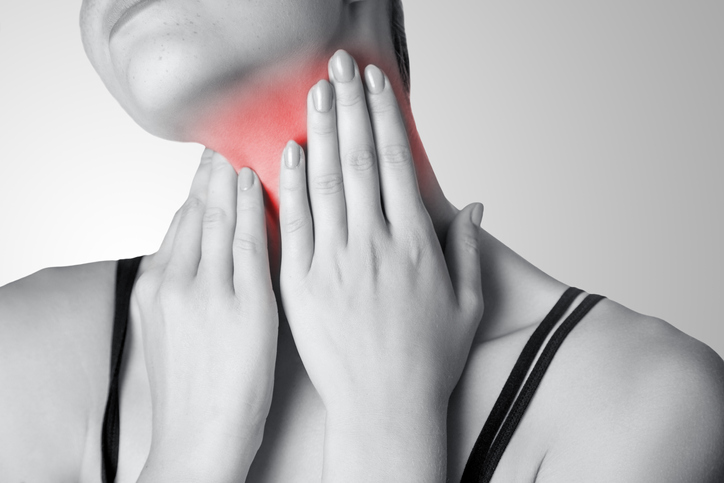PUBLICIDAD
What Is Mononucleosis and What Are Its Symptoms?
0<p> Infectious mononucleosis (“kissing disease,” or glandular fever) is a contagious disease that usually occurs in teenagers and young adults. It is characterized by fever, sore throat, and swollen lymph nodes. Keep reading to find out how it is transmitted and treated and what you can do to prevent it.</span></p>
Publicidad
https://hdstatic.net/gridfs/holadoctor/_0_9-1595468858,848.jpg
<p> Infectious mononucleosis (“kissing disease,” or glandular fever) is a contagious disease that usually occurs in teenagers and young adults. It is characterized by fever, sore throat, and swollen lymph nodes. Keep reading to find out how it is transmitted and treated and what you can do to prevent it.</span></p>
https://hdstatic.net/gridfs/holadoctor/_1_39-1595468861,347.jpg
Causes
<p><span style="background-color: rgb(255, 255, 255);">In most cases, mononucleosis (or “mono”) is caused by the Epstein-Barr virus, from the family of herpes viruses. However, it can also be caused by other viruses, such as cytomegalovirus or Toxoplasma gondii (which causes toxoplasmosis)</span><br></p>
https://hdstatic.net/gridfs/holadoctor/_2_45-1595468861,937.jpg
Incubation period
<br><p>The virus has an incubation period of up to 40 days. It is spread through body fluids, where it can remain alive for several hours. It is primarily transmitted through saliva (hence its popular name) but can also be spread through blood transfusions, sexual contact, or perinatally. </p>
https://hdstatic.net/gridfs/holadoctor/_3_50-1595468891,237.jpg
Symptoms
<br><p>The symptoms of mononucleosis appear four to six weeks after infection. They include fever, sore throat, headache, body aches, extreme fatigue, swollen lymph nodes (especially in the neck and armpits), petechiae (reddish spots on the skin), and rash. </p>
https://hdstatic.net/gridfs/holadoctor/_4_45-1595468890,969.jpg
Other signs
<br><p>More rarely, mononucleosis can cause other symptoms like chest pain, cough, hives, jaundice, nosebleeds, abnormal heart rate, sensitivity to light, and breathing problems. </p>
https://hdstatic.net/gridfs/holadoctor/_5_11-1595468930,051.jpg
People at risk
<br><p>According to health authorities, the people most likely to catch mononucleosis are those between ages 15 and 30, nurses, medical residents, caregivers, and people who take medications that suppress their immune system. </p>
https://hdstatic.net/gridfs/holadoctor/_6_23-1595469016,426.jpg
Diagnosis
<br><p>To diagnose mononucleosis the doctor will order blood tests to specifically analyze the amount of red cells in blood, among other things. Although many studies have been done, there is still no effective vaccine available for this virus. </p>
https://hdstatic.net/gridfs/holadoctor/_7_7-1595469017,02.jpg
Treatment
<br><p>To treat mononucleosis, you can take painkillers, such as paracetamol (acetaminophen) or ibuprofen, and fever medicines. You can also gargle with warm water and salt to relieve throat irritation, drink lots of fluids to prevent dehydration, and rest. </p>
https://hdstatic.net/gridfs/holadoctor/_8_11-1595469040,471.jpg
Prevention
<br><p>To prevent mononucleosis, you should avoid exchanging fluids with someone who is sick. Children should not go to school during the illness’ acute phase, which is between the first and second week.</p>
https://hdstatic.net/gridfs/holadoctor/_9_43-1595468964,043.jpg
Diet
<br><p>The effects of fatigue, fever, and sore throat can make it difficult to eat daily meals. Try incorporating foods that promote digestion and nutrient absorption, such as fruits, vegetables, grains, seeds, and lean meats. You can also try drinking teas with antiviral properties, such as ginger, cinnamon, garlic, and lemon. </p>
https://hdstatic.net/gridfs/holadoctor/_10_41-1595468964,397.jpg
Exercise
<p><span style="background-color: rgb(255, 255, 255);">Fatigue and fever can delay your return to exercise and physical activity, so you may feel very anxious about restarting them. For this, experts recommend taking it slow. As your body allows, do low-impact activities and increase the intensity, but avoid contact sports.</span><br></p><br>
https://hdstatic.net/gridfs/holadoctor/_11_44-1595468929,038.jpg
Follow the recommendations
<p>You must respect the doctor's recommendations and avoid self-medication; a very common mistake in this situation is the improper use of antibiotics. It is also not necessary to completely isolate yourself, as a good state of mind can make it easier to go through this process. Your family and friends can accompany you, as long as the corresponding preventive measures are followed.</p>
https://hdstatic.net/gridfs/holadoctor/_12_25-1595468930,679.jpg
Sources
<p>Sources: National Library of Medicine, Centers for Diseases Control and Prevention, National Institute of Allergies and Infectious Diseases.</p>
/en/photo-album/what-is-mononucleosis-and-what-are-its-symptoms
/en/photo-album/what-is-mononucleosis-and-what-are-its-symptoms-causes
/en/photo-album/what-is-mononucleosis-and-what-are-its-symptoms-incubation-period
/en/photo-album/what-is-mononucleosis-and-what-are-its-symptoms-symptoms
/en/photo-album/what-is-mononucleosis-and-what-are-its-symptoms-other-signs
/en/photo-album/what-is-mononucleosis-and-what-are-its-symptoms-people-at-risk
/en/photo-album/what-is-mononucleosis-and-what-are-its-symptoms-diagnosis
/en/photo-album/what-is-mononucleosis-and-what-are-its-symptoms-treatment
/en/photo-album/what-is-mononucleosis-and-what-are-its-symptoms-prevention
/en/photo-album/what-is-mononucleosis-and-what-are-its-symptoms-diet
/en/photo-album/what-is-mononucleosis-and-what-are-its-symptoms-exercise
/en/photo-album/what-is-mononucleosis-and-what-are-its-symptoms-follow-the-recommendations
/en/photo-album/what-is-mononucleosis-and-what-are-its-symptoms-sources














